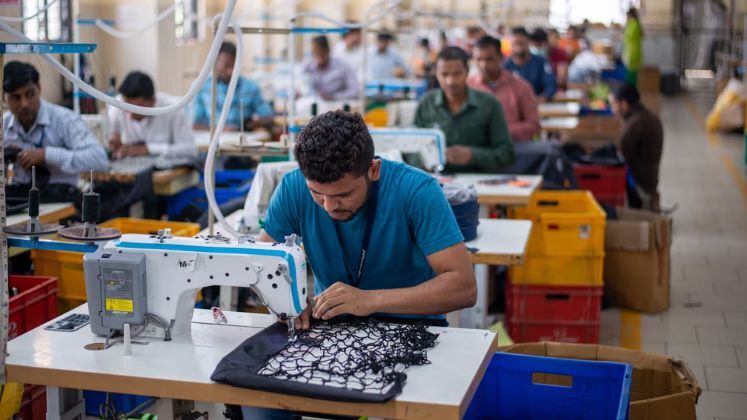
Due to a lack of finance and technological expertise, the Indian textile industry—which is mostly driven by micro, small, and medium-sized businesses (MSME)—finds it difficult to modernise and increase efficiency, Crisil Ratings has said in its India Progress report.
The report also noted that MSMEs’ competitiveness is impacted by the industry’s fragmentation, which restricts their ability to investigate new product categories or growth opportunities.
According to the report, government programs like the PM MITRA Parks scheme, which provides plug-and-play infrastructure, will be essential in fostering the growth of small businesses that struggle because of a lack of effective transportation networks, e-commerce infrastructure, certification centres, and power supply interruptions.
Notably, SMEs suffer from low productivity due to antiquated procedures, a lack of innovation, and technology limitations. Their competitiveness is hampered by their inability to adjust to emerging trends due to a lack of sufficient information and experience.
Over the next ten years, it is anticipated that the demand for Indian textiles would rise significantly due to both the country’s textile industry’s enhanced competitiveness in the international market and the steady improvement in domestic demand.
According to the report, India needs to challenge major textile exporters like China and Bangladesh in order to increase its market share globally. However, this will depend on its capacity to overcome obstacles like shifting global demand, the lack of trade agreements with important markets, the volatility of cotton prices, and rising labour costs.
According to Crisil’s analysis, poor accommodations and constrictive work schedules pose challenges for women employed in the RMG industry. Resolving these problems is crucial to fostering equitable growth in the industry and ensuring a safer, more encouraging workplace.
Export trends highlight India’s dominant position in cotton production and exports of cotton yarn during the last 20 years. India is the world’s largest exporter of cotton yarn and the third-largest exporter of polyester yarn. It also produces raw materials competitively, contributing 23 per cent of the world’s cotton production.
In comparison to China, India has a smaller part of the world market and confronts fierce rivalry in the knitting, weaving, and processing industries, according to Crisil. India has a meagre 3 per cent worldwide trade share in the RMG sector, significantly less than rivals like China, which shows how little it can do to generate value. India has also failed to profit from the move away from China.
“India needs more free trade agreements (FTAs) in order to compete on an equitable playing field. These accords will offer doors to additional regions with considerable potential in addition to helping Indian exports reach major markets,” said Crisil.
In a worldwide market that is shifting more and more towards synthetic fibres like polyester, India’s reliance on cotton textiles presents a problem. Man-made fibres account for about 60 per cent of the world’s textile consumption, while just 5 per cent of this market is in India. According to Crisil Ratings, this production mismatch has hindered India’s expansion in global markets, where there is a growing need for synthetic textiles.






